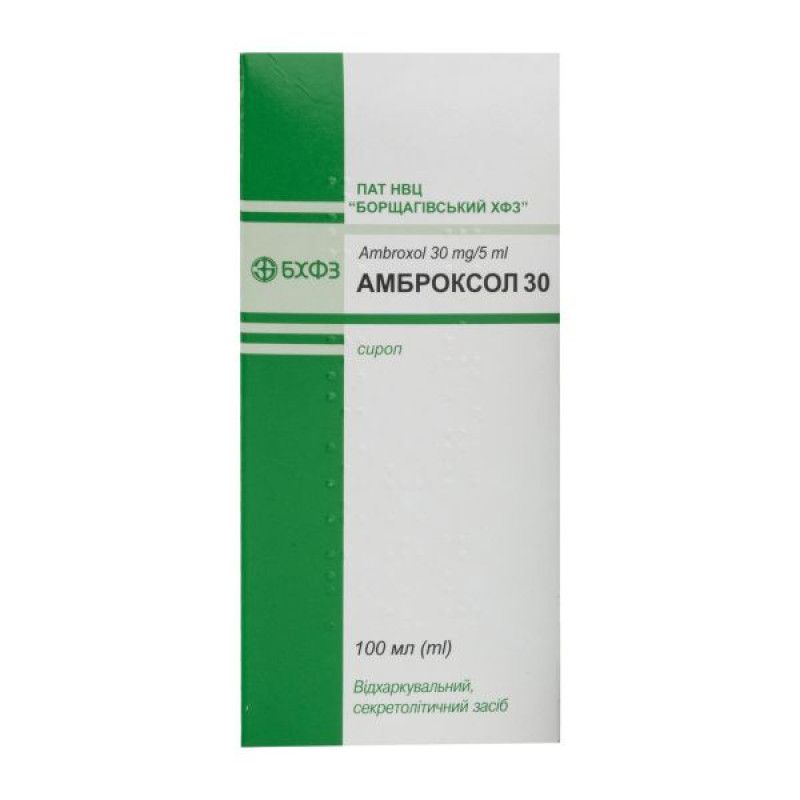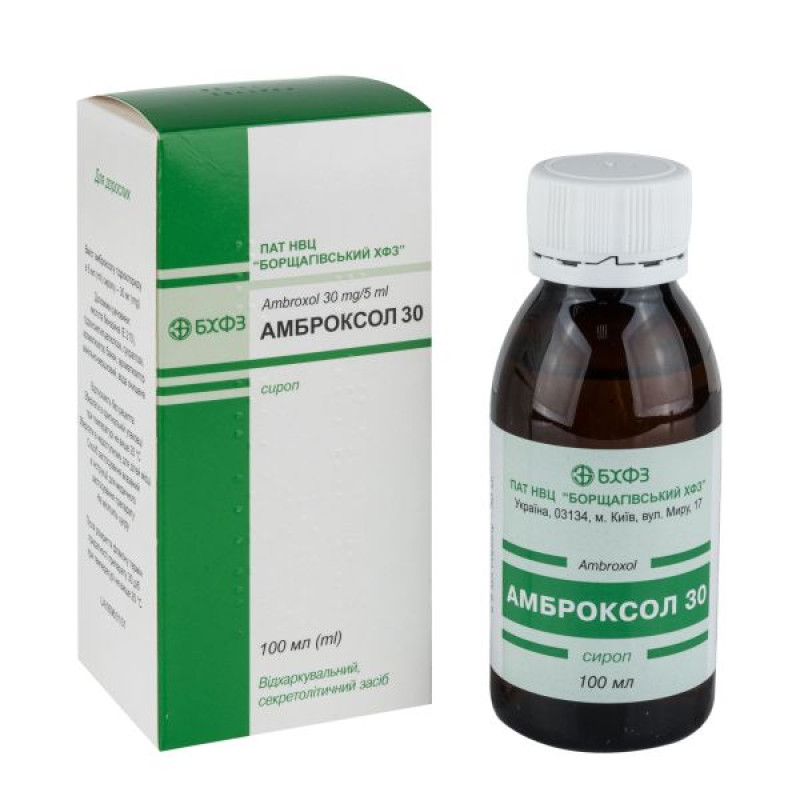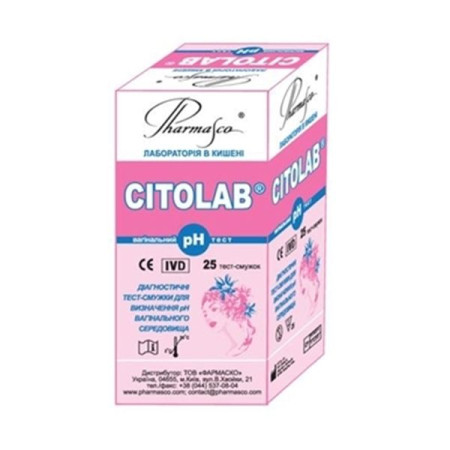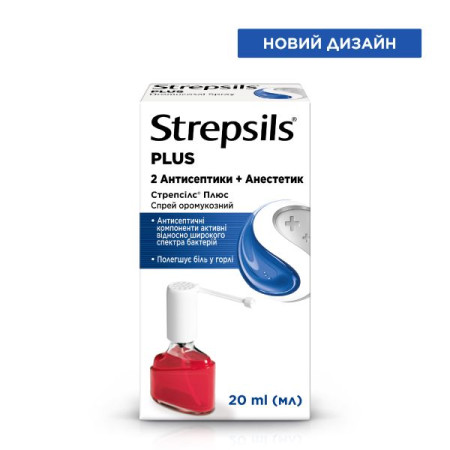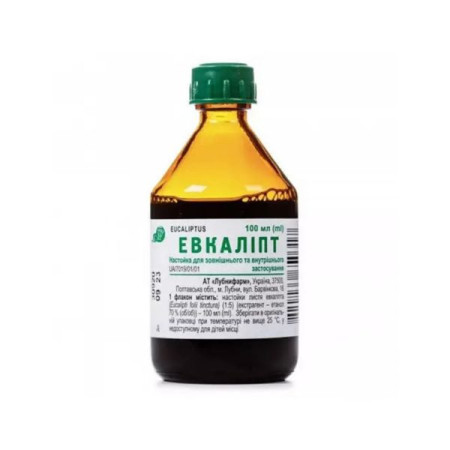Ambroxol 30 syrup 30 mg/5 ml polymer bottle 100 ml
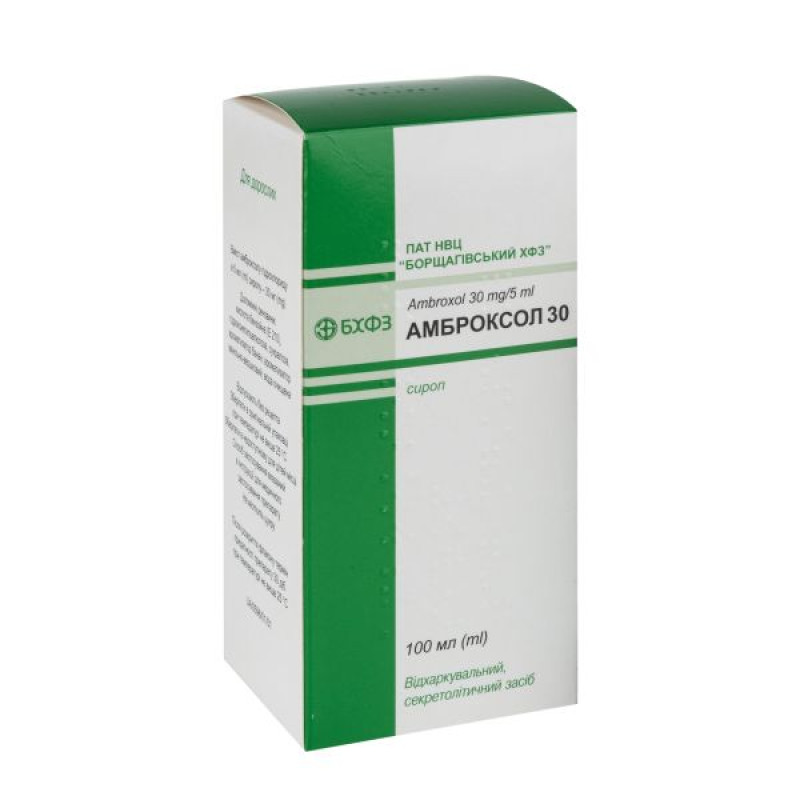
Instructions Ambroxol 30 syrup 30 mg/5 ml polymer bottle 100 ml
Composition
active ingredient: ambroxol hydrochloride;
5 ml of syrup contain 30 mg of ambroxol hydrochloride (calculated as 100% dry matter);
excipients: benzoic acid (E 210), sucralose, hydroxyethylcellulose, banana flavoring, vanilla-cream flavoring, purified water.
Dosage form
Syrup.
Main physicochemical properties: colorless or slightly yellowish transparent liquid with a specific odor.
Pharmacotherapeutic group
Means used for coughs and colds. Mucolytics. Ambroxol. ATX code R05C B06.
Pharmacological properties
Pharmacodynamics
Ambroxol increases the secretion of the glands of the respiratory tract, stimulates the activity of the villi of the respiratory tract, enhances the formation of surfactant in the lungs. These effects lead to improved mucus discharge and its elimination (mucociliary clearance). Activation of fluid secretion and increased mucociliary clearance facilitate mucus excretion and reduce cough.
Pharmacokinetics
The drug's effect begins 30 minutes after administration and lasts about 10 hours.
Absorption of the drug is rapid and fairly complete. Peak plasma levels are reached after 0.5-3 hours. The degree of binding of ambroxol to plasma proteins is 80-90%.
Distribution of ambroxol from the blood to the tissues is rapid, with high concentrations of the active substance in the lungs. The drug penetrates the blood-brain and placental barriers, and into breast milk.
Ambroxol is metabolized in the liver by conjugation. The half-life from blood plasma is 10 hours; cumulation is not detected. Approximately 90% is excreted by the kidneys as water-soluble metabolites, 5% as unchanged drug. The half-life is prolonged in severe chronic renal failure.
Indication
Secretolytic therapy for acute and chronic bronchopulmonary diseases associated with disorders of bronchial secretion and impaired sputum secretion.
Contraindication
Hypersensitivity (allergy) to ambroxol or to other components of the drug.
Interaction with other medicinal products and other types of interactions
The use of ambroxol together with antibiotics (amoxicillin, cefuroxime, erythromycin, doxycycline) contributes to an increase in the concentration of antibiotics in the lung tissues.
The use of Ambroxol 30 with antitussive drugs leads to difficulty in expectorating sputum while reducing cough. Therefore, such a combination is possible only after a careful assessment by a doctor of the ratio of the expected benefit and possible risk of use.
Application features
With the use of mucolytic agents such as ambroxol hydrochloride, isolated cases of severe skin lesions such as erythema multiforme, Stevens-Johnson syndrome and Lyell's syndrome (toxic epidermal necrolysis), acute generalized exanthematous pustulosis have been reported. In most cases, these could be explained by the severity of the underlying disease and/or concomitant therapy. In addition, in the initial stage of Stevens-Johnson syndrome or Lyell's syndrome, patients may experience flu-like non-specific prodromal symptoms such as fever, body aches (malaise), rhinitis, cough, sore throat. As a result of their erroneous assessment, patients may have received drugs for the symptomatic treatment of cough and cold. For this reason, if progressive skin lesions (sometimes associated with blistering or mucosal lesions) occur, the drug should be discontinued immediately and medical attention should be sought.
The drug should be used with caution in patients with gastric and/or duodenal ulcers.
In case of impaired renal function or severe liver disease, Ambroxol 30 should be used only after consulting a doctor; it is possible to extend the intervals between doses or reduce the dose of the drug. Ambroxol hydrochloride is metabolized in the liver and excreted by the kidneys, therefore, in severe renal failure, accumulation of ambroxol and/or its metabolites in the liver is possible.
During treatment, it is necessary to consume enough fluids (juices, tea, water) to enhance the mucolytic effect of the drug.
Ambroxol 30 does not contain sugar. Does not contain alcohol.
Ambroxol 30 with antitussive drugs leads to impaired sputum discharge while reducing cough.
In case of increased mucus secretion, in case of impaired bronchomotor functions (for example, in such a rare genetically determined disease as primary ciliary dyskinesia), mucolytic agents (including ambroxol) should be used with caution due to the risk of possible accumulation of a large amount of mucus.
Ability to influence reaction speed when driving vehicles or other mechanisms
Not described.
Use during pregnancy or breastfeeding
Ambroxol hydrochloride crosses the placental barrier. Clinical studies of ambroxol hydrochloride have not revealed any harmful effects on the fetus after 28 weeks of pregnancy. However, the usual precautions for taking medications during pregnancy should be observed. It is especially not recommended to use the drug in the first trimester of pregnancy.
Breast-feeding
Ambroxol hydrochloride passes into breast milk, so the drug is not recommended for use during breastfeeding.
Fertility
Preclinical studies did not indicate direct or indirect harmful effects on fertility.
Method of administration and doses
Adults and children over 12 years of age – 10 ml (2 measuring spoons) 2 times a day, which is equivalent to 120 mg of ambroxol hydrochloride per day.
The drug can be taken with or without food. Food intake does not affect the effectiveness of the drug.
The duration of treatment for acute respiratory diseases and initial treatment of chronic conditions is up to 14 days. You should consult a doctor if symptoms persist for more than 14 days or worsen despite taking the drug.
The dosage regimen with the highest dose should be used for initial treatment, the dose can be halved after 14 days of treatment with the drug.
Children
Children under 12 years of age should use Ambroxol 15.
Overdose
At present, there are no specific symptoms of ambroxol overdose. In case of accidental overdose and/or mistaken use, symptoms consistent with the side effects of ambroxol hydrochloride may occur. Treatment is symptomatic.
Adverse reactions
The drug is well tolerated by patients.
Digestive tract: dyspepsia, heartburn, nausea, vomiting, abdominal pain, diarrhea/constipation, hypersalivation, dry mouth, hypoesthesia of the oral and/or pharyngeal mucosa.
Respiratory system: rhinorrhea, dryness of the mucous membrane of the upper respiratory tract, shortness of breath (as a symptom of a hypersensitivity reaction).
Urinary system: dysuria.
Nervous system: dysgeusia (taste disorder).
Immune system, skin and subcutaneous tissue: itching, rash, urticaria, anaphylactic reactions (including angioedema, anaphylactic shock), fever, chills, other allergic reactions.
Very rarely, severe skin lesions such as erythema multiforme, Stevens-Johnson syndrome and Lyell's syndrome, acute generalized exanthematous pustulosis may occur.
Other: reactions from the mucous membranes.
Expiration date
3 years.
Do not use the drug after the expiration date indicated on the package.
Storage conditions
In the original packaging at a temperature not exceeding 25 °C.
Keep out of reach of children.
Packaging
100 ml in bottles, 1 bottle with a dosing spoon in a pack.
Vacation category
Without a prescription.
Producer
Public Joint Stock Company "Research and Production Center "Borshchagov Chemical and Pharmaceutical Plant".
Location of the manufacturer and its business address
Ukraine, 03134, Kyiv, Myru St., 17.
There are no reviews for this product.
There are no reviews for this product, be the first to leave your review.
No questions about this product, be the first and ask your question.







